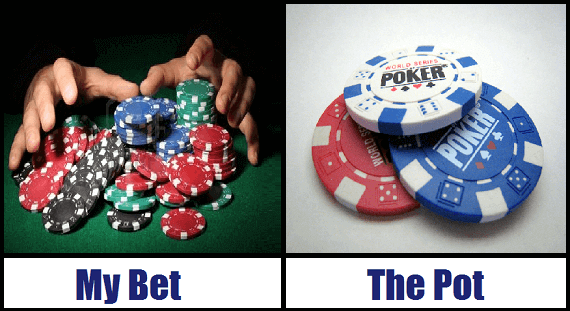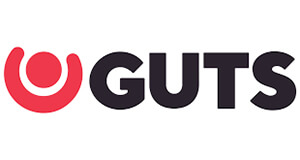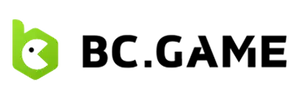An overbet in poker is a bet that is larger than a pot sized bet.
At microstakes, overbets are generally moves made by fish, or by regulars trying to get max value from a fish.
At higher stakes, overbets are a key part of a well balanced strategy. Overbets are the best way to punish a capped range which you beat.
Here are some other advantages to overbetting:
- Overbetting gets maximum value with strong hands
- Overbets allows hero to get all-in in single raised pots without being check-raised
- Overbetting generate maximum fold equity with hero’s bluffs
- Overbets frustrate opponents and often force mistakes from those unfamiliar with overbet theory

When should I overbet in poker?
Poker strategy is always evolving, and overbetting is a relatively new concept in poker history.
That being said, the common understanding is overbetting is the best play against a capped range.
Imagine you open from UTG to 3x, and get a call from BB.
The pot is 6bb and the flop and turn come:

On the flop, hero cbetted 4.5bb and got a call from the BTN. The pot on the turn is 15bb. On the turn, if villain is the type to raise a set on the flop, we can say villain’s range is capped at A7.
He is unlikely to peel the flop with many ace high. Even if he flats his sets on the flop, that’s still only 3 combos of 55, 3 combos of 77, and 2 A7s and 2 A5s combos. UTG has all of that in his range, plus strong Ax, AK, KK and AA.
This is a spot where you may consider an overbet. When overbetting, we will want to use a polarized range, with mainly bluffs and nutted hands.
Please also recognize that our bluffs have equity, and his range will occasionally river us. However, we will consider this as a polarized (air or nuts) range for simplicity, to illustrate the concept.
Polarizing part one: How to overbet for value
Let’s imagine hero has KK here. He wants to get absolute max value out of his opponent. Even betting pot on both streets, he would only generate a pot of 135bb at showdown, leaving ~30bb behind in each stack.
Overbetting thus allows him to get his stack in. To demonstrate, let’s say he cbets 2x pot at 30bb. When called, he goes to the river with a pot of 75bb. Betting ~63bb on the river, he is able to get full stacks in.

Hero’s range that may want to overbet this turn for value is:
| Hand | Number of combinations |
| AA | 3 |
| KK | 3 |
| 77 | 3 |
| 55 | 3 |
| AK | 9 |
| Total | 27 |
I want to make clear that just because hero overbets these hands for value, does not mean he does not bet his other hands for value at a smaller size. You can have multiple betting ranges on each street. Many players will have an overbet range, a half pot range and a check back range in this spot.
Polarizing part two: How to overbet as a bluff
Let’s bring the board texture back:

Let’s look at hands that may want to bluff on this turn:
| Hand | Equity Type | Combinations |
| QJs | Gutshot | 4 |
| QTs | Gutshot | 4 |
| JTs | Gutshot | 4 |
| 89s | Gutshot | 4 |
| Total | 16 |
On this board, it’s mostly gutshots that are hard bluffs since the turn did not bring many straight, or any flush draws. These are hands that opened UTG, cbet the flop and don’t have showdown value after BB calls the flop.
They also have significant blocker value to the KQ, KJ and KT, QQ, JJ and TT hands that make up a significant portion of the top of villain’s range. Thus, they are ideal bluffs.
How to size your overbets
Hero has roughly 27 value, and 16 bluff combos. If he overbets this entire range, 63% of it beats villain’s range, while 37% of it loses to his bluffcatchers.
If you bet 2x pot, you give your opponent 40% odds, or 1.5:1 on a call. Thus, his call needs to be right 40% of the time against your range of nuts/bluff. We should not bluff more than 40% of the time with this size, or else he can insta-profit by calling with any pair as a bluffcatcher.
Since your range is 37% bluffs, a betsize of 2x pot is nearly appropriate give that it allows 40% of your range to be bluffs. You can adjust by betting a little smaller (perhaps 1.5x pot), or adding a few bluffs to bring the total proportion to 40%.
Here are some common bet sizes and the corresponding odds you give your opponent:
| Bet Size (proportion of pot) | Total Pot after call (proportion of pot) | Pot Odds (or maximum bluff frequency) |
| 0.5 | 1 + 0.5 + 0.5 = 2 | 25% |
| 0.67 | 1 + 0.67 + 0.67 = 2.34 | 28.6% |
| 0.75 | 1 + 0.75 + 0.75 = 2.5 | 30% |
| 1 | 1 + 1 + 1 = 3 | 33% |
| 1.5 | 1 + 1.5 + 1.5 = 4 | 37.5% |
| 2 | 1 + 2 + 2 = 5 | 40% |
| 3 | 1 + 3 + 3 = 7 | 43% |
When overbetting, you should consider how much of your range is nuts, and how much are bluffs and adjust accordingly.
Other advanced concepts that will affect your overbet sizing is:
- The equity of villain’s calling hands
- The equity of your bluffs
- Reads you have that suggest opponent folds too much, or too little to overbets.
Conclusion
In summary, overbetting is a play for when your range is stronger than your opponent’s, particularly when his range is capped. If you have a good number of value and bluff hands, you should consider an overbet. You get more value from your good hands, and more fold equity for your bluffs.
Pick your overbet sizing based on how many bluffs and value hands your range has relative to your opponent’s, and adjust based on unique factors for each hand.
If you found the GTO or betsizing confusing, I suggest you read on GTO betsizing theory, bluffing odds and pot odds.























